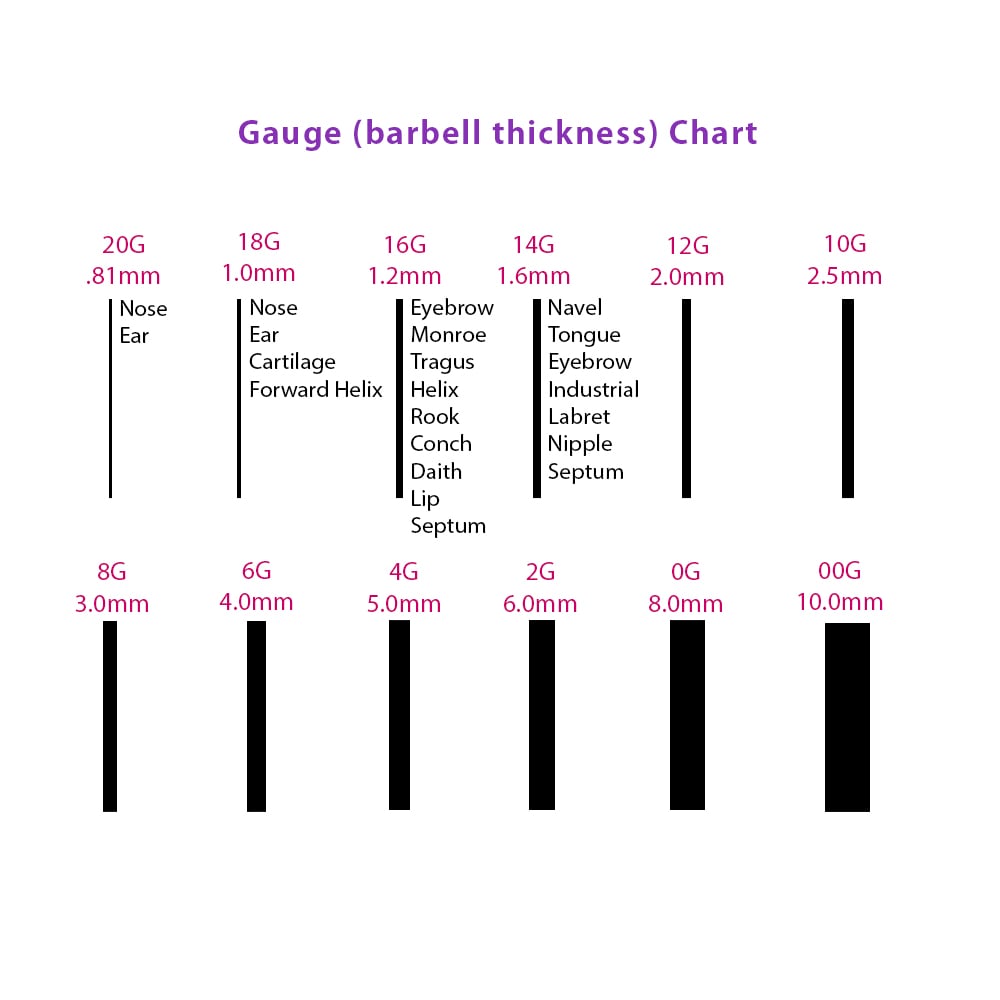
It has become common to refer to “stretched lobes” as “ gauged ears.” This is incorrect because every piercing has a gauge as gauge refers to the thickness of the piercing hole rather than a description of a specific piercing type. The term “gauge earrings” comes from a misunderstanding of the term “gauge.” This can be a bit confusing at first, but if you’re not planning on stretching your piercing, then you’ll really just need to remember the specific gauge of your piercing and choose the proper jewelry from there. Small gauges will have a thinner bar but a larger number (like 20G), and large gauges will have a thicker bar but a smaller number (like 14G). What’s The Difference Between Small Gauges And Large Gauges? Some piercing areas can be stretched to a larger gauge, so if you’re unhappy with the aesthetic of your piercing, you can talk to your piercer about stretching protocols and whether that’s an option for you and your piercing. This allows thicker jewelry to go into the piercing hole and follows current styles and trends. However, now that styles are changing, it’s more common to pierce the lobe at 16G or 14G.


In the past, it was more common to pierce your lobe at 20G or 18G. 20G is about the lowest that you should go any smaller than that, and your body may view the jewelry as a splinter or something similar and try to push it out.īesides health considerations, you’ll choose your gauge based on aesthetics. For example, your lobes are usually pierced at 20G to 14G.

The gauge at which you’re pierced has to do with the piercing location and how that area heals. The jewelry that you choose needs to be the same gauge if you want to avoid certain piercing complications, like rejected jewelry. When you get pierced, the needle with which you are pierced will be a certain gauge. The gauge of your piercing is important for a number of reasons.įirst and foremost, you must choose the proper jewelry gauge for the health of your piercing. Why Is The Gauge Of My Piercing Important?


 0 kommentar(er)
0 kommentar(er)
